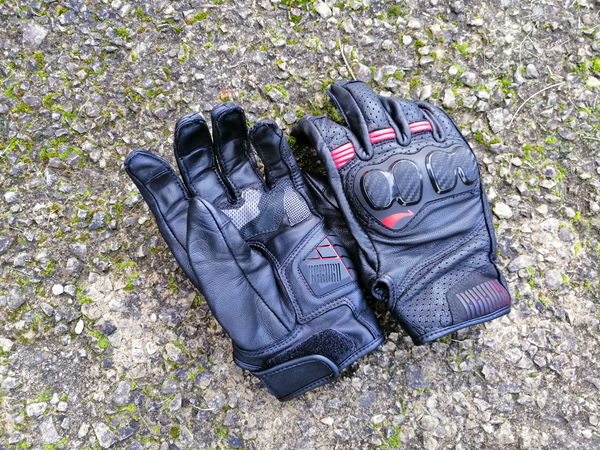Shark Aeron GP Review: Road and Track With MotoGP-Spec Lid
Shark’s MotoGP-spec Aeron GP is something of a novelty in that it features moveable aerodynamic elements to reduce drag
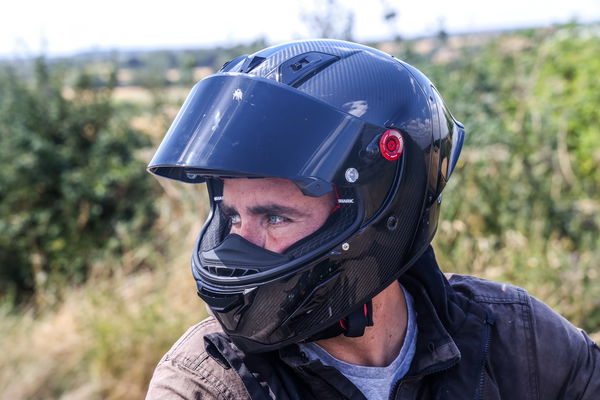
Shark broke into new ground in 2023, with the launch of what is believed to be the first motorcycle helmet to feature moveable aerodynamic elements.

It is the French brand’s flagship product, the Aeron GP, and one of the people behind the innovative new product is a certain Mr Johann Zarco. The current LCR Honda racer has been a key part in testing and developing the aerodynamic elements. These really are the business end of the product, and Shark claims the system reduces the flag effect by 80 per cent, turbulence by 50 per cent and overall drag by five per cent.
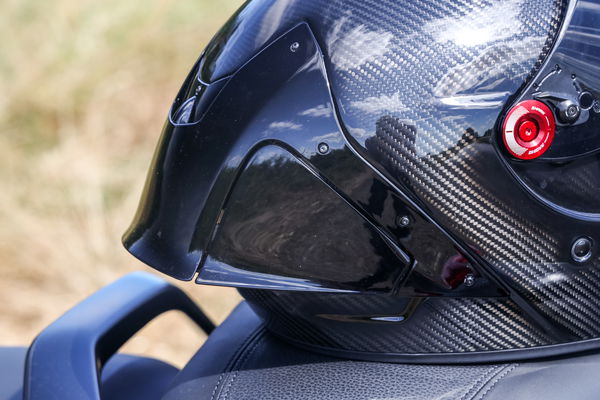
To find out how those numbers translate to the real world, I’ve been testing the Aeron GP for a couple of months now, riding on the road on nakeds, sports bikes and tourers, and on track at Donington Park riding my XSR900 GP press bike. So far I’ve covered around a thousand miles both on the road and track to give me the experience required to provide a full and thorough review.
Price, colours, sizes
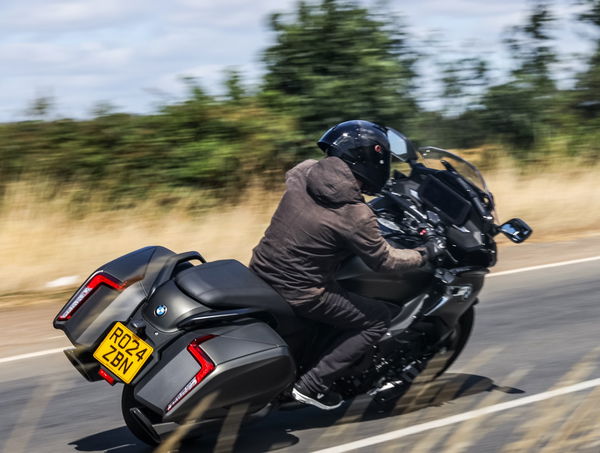
The Shark Aeron GP is currently on sale in the UK in seven different colourways - Blue, Red, White, Matt Carbon, Gloss Carbon and two MotoGP replica schemes, one for Zarco, and one for Fernandez. Helmets are available from sizes XS through to XXL and all helmets, regardless of finish or colour option, are priced at £949.99
You can check out the full Shark 2024 range here.
How much does it weigh?
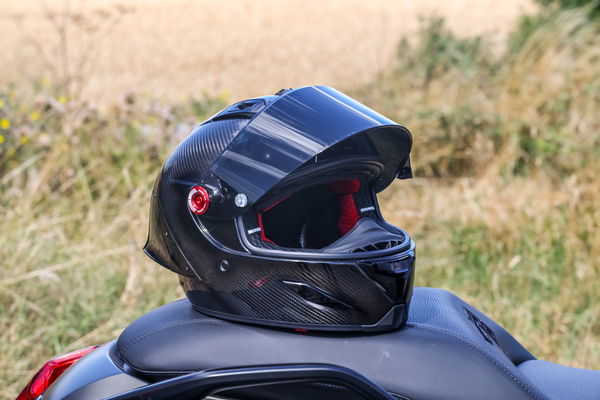
The stated weight of the helmet is 1,410 grams, and at the time of writing, mine was slightly more than that at 1,417 grams on my digital scales. First off, you aren’t going to notice seven grams and secondly, the interior of my lid might not have totally dried out after the Donington Park trackday - so we’ll let it off.
Comparing the Aeron GP to the competition, it comes up lighter than the claimed weight of the Arai RX-7v Evo (1,550 grams) and less than the claimed weight of the AGV Pista GP RR (1,450 grams in the smallest shell size).
As you’d expect, the Aeron feels very light to hold, and when being worn. It’s a feeling that is exaggerated by the physical size of the lid. With its extremely large rear spoiler, and those integrated moveable winglets it looks like a sizable yet attractive looking thing, tricking your brain into thinking it’ll be much heavier than it actually is.
What is the visor like?
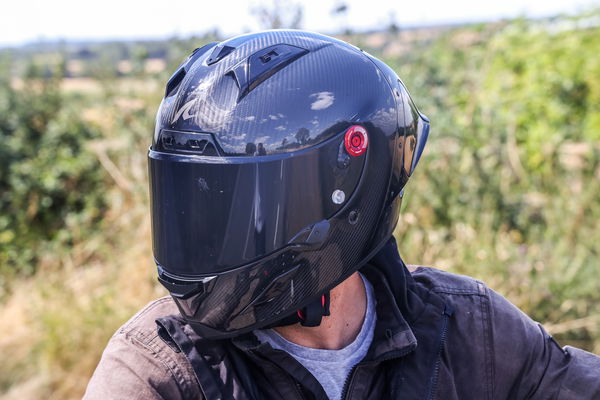
When I ordered my Aeron GP I asked for the PR team to include a dark tinted visor for me (a normal tinted visor is included in the box), and if you’ve never used a Shark dark tinted visor before - note that they can be extremely dark. Nicknamed ‘the welding mask’ in motorcycle journalism circles, they are fantastic when riding in bright sunshine - I just wouldn’t like to head out in grey or gloomy conditions given how dark it is. For clarity on this point, I did ask for the extra dark visor purely for track riding and photoshoots, and a less heavily tinted option is also available. The optical quality of the visor is excellent with absolutely zero distortion and an easy-to-find tab on the left-hand side of the visor to ensure it can be locked down securely.
One thing you won’t find in the box of the Aeron GP is a Pinlock, and that’s because Shark utilises an anti-fog lining on the inside of the visor. I’m always a little dubious about these kinds of things and tend to prefer leaning on a Pinlock in wet weather. That said, the Shark anti-fog treatment seems to work well. I’ve used the lid during some heavy rain showers and found the visor remained crystal clear, and even when panting hard during my track sessions at Donington Park there was no fogging to report. I have yet to have a chance to test the coating in really cold and wet weather though. Once that takes place I’ll be dropping an update on this review. One thing you will find in the box are five visor tear-off strips, and a very trick Shark branded carry case for the full-factory look. It's a nice touch to see these last two items included with the Aeron GP, and just another nod to this product's track-focused design.
Is it comfortable?
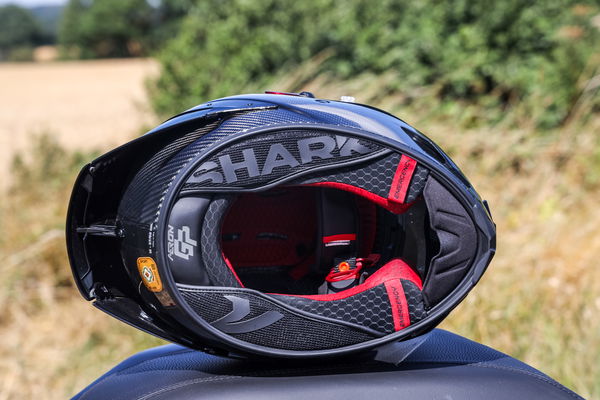
Like any new lid, it took me around four rides to ‘break in’ the interior of the helmet and now it’s comfortable rides or two or three hours without feeling any discomfort. The cheek pads are extremely supportive, clamping firmly on either side of my face and helping to prevent any side-to-side buffeting that can sometimes occur at speed.
One thing that did surprise me about the Aeron GP was how quiet it is considering it's a track-focused FIM-spec product. I’m not advocating not using earplugs when you ride, but compared to some of the other track-focused motorcycle helmets I’ve tested, the Aeron GP seems much quieter, without any of the low-frequency rumbling that can occur when using a lid with multiple aerodynamic elements.
What’s the stability like?

With so much of this helmet’s technology centred on reducing drag and improving stability, I was very keen to see if all that research and development had paid off. On the road, I found the Aeron GP to provide decent stability, especially when riding my Yamaha XSR900 GP long-term press bike. I also tested the lid aboard a BMW K1600 B and found the helmet to get a little more buffeted by the bagger version of BMW’s uber-cruiser. It’s worth noting that I also used a different model of helmet on the K1600 and came up against the same kind of turbulence.
Really though, testing the Aeron GP on any other bike than a sports bike and any other setting than a track is bit of a waste of time, given the amount of on-track development that went into its Adaptive Aero System (A2S).
The day of the trackday was the hottest day of the year so far, with some UK regions hitting 34 degrees, and Donington nudging the 30s and being bathed in glorious summer sunshine. Really the focus of the day for me was getting a feel for the stability of the helmet, seeing if I could feel the winglets doing their thing, and also (given as it was so hot and humid) testing out the ventilation system.
On the first point. The stability when tucked in behind the bubble of the XSR900 GP is very good, and likewise, when you pop up from behind the bubble in the braking zone there is no significant pressure on my neck or shoulders. I’m not sure I can feel the aero elements working in this particular scenario, although when hanging off the bike and looking through a corner, I could feel (and hear) one or both of the vents opening to allow the side profile of the helmet to shrink a little. Because of this, the lid is less prone to getting grabbed by a crosswind, and I could definitely feel less movement in this particular situation than I have with other track-focused helmets.

The vents on the Aeron GP did an extremely good job of getting some air to my face, with the frontally mounted chin vent providing more air than a lot of other helmets I’ve used. The top-mounted inlets also let in a good amount of air, and can easily be operated even when wearing my Spidi Carbotech race gloves. There are also two vents on the brow of the helmet, although opening and closing these is trickier thanks to a very small tab. These vents also allowed some bugs to make their way inside the helmet, leading me to leave them closed for much of the day.
Should I buy the Shark Aeron GP

The new Aeron GP is an extremely high-performing helmet when used on the road and the track. It’s lightweight, looks phenomenal (especially in the gloss carbon fibre finish I have), offers brilliant ventilation and is homologated to the latest ECE 22.06 regulations.
There might be an argument for those who don’t ride on the track for this helmet wasting some money on a helmet like this - being as it’s here where so much of it was developed. And while that may be true to a point, even road riders will appreciate the Aeron GP’s excellent features and comfort levels - both of which in my opinion are a step up when compared to the Race R Pro GP.
You can find out more about the Aeron GP on the official website.
